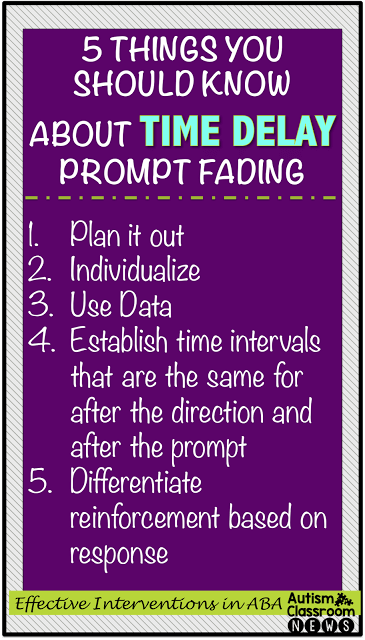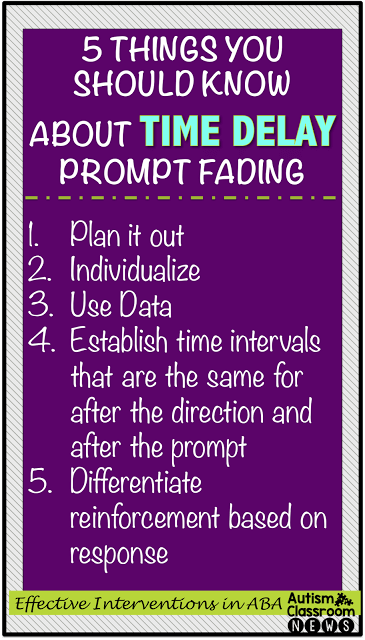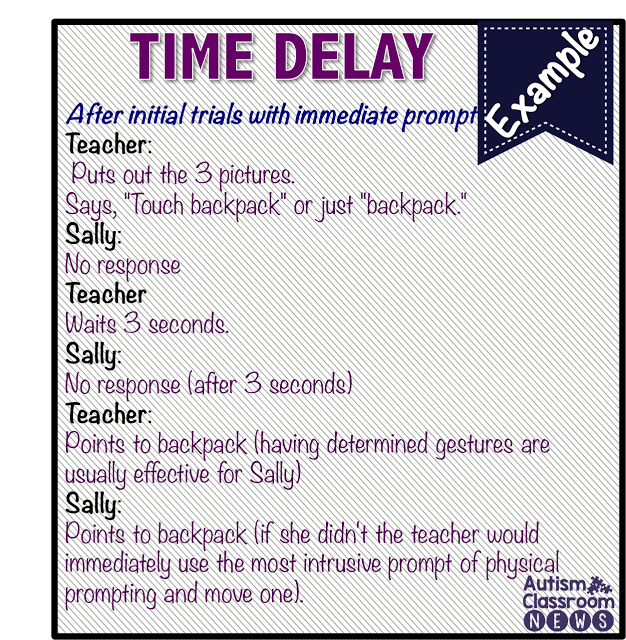What is Time Delay?
Time delay is where you start with an immediate prompt right after you administer the direction. So if I’m teaching Bob to name “backpack” when I show him a backpack or picture of a backpack, I would show him the picture and immediately I would say “backpack.” If he echoes my response, he gets reinforced (more on that later in the series). Similarly if I’m teaching Sally to point to a picture of a backpack when I have 3 pictures on the table, I would start instruction by putting the 3 pictures on the table and immediately pointing to the picture of the backpack. Over time I would delay when I provide the prompt based on which type of time delay I have chosen to use. In both types of common time delay procedures described below, you still prompt immediately when you begin teaching the skill until the student is reliably repeating or following the prompt you use to give you the correct response. After that point you either provide a prompt at a consistent time period after the direction or you gradually increase the time you wait. There are always variations within prompting procedures so these are not the only ways time delay can be implemented, but they are the most common.
Constant time delay is when I always provide a prompt a consistent time after I have given the direction. Usually this is around 3-5 seconds and you establish it before you implement the procedure. You still prompt immediately when you begin teaching the skill until the student is reliably repeating or following the prompt you use to give you the correct response. After that point, using constant time delay, Sally’s example would look like this:
In progressive time delay, rather than a consistent time delay, you gradually change the amount of time, slowly increasing the delay over time. So in the example above, the delay after giving the direction might start at 1 second and gradually increase over time until the student is more likely to give you the correct response.
You can find out much more detailed information about both types of time delay in the National Professional Development Centers’ brief HERE. For the purposes of this post, here are 5 things that need to be considered to use it effectively.
1. Plan it out
It’s important to plan out which type of time delay you want to use. You would choose to use time delay when the student is likely to make a mistake if you don’t prompt immediately initially and when you have planned out the elements below to assure that all the instructors are using it consistently.
2. Individualize
3. Use Data
4. Establish time intervals that are the same for after the direction and after the prompt
You need to play for 2 intervals in which there will be a delay. After your initial trials in which you prompt immediately, when you start to fade the prompts, the first delay will be right after the direction. The second will be if the student doesn’t respond to that first prompt. Neitzel and Wolery (2009) make a good point that keeping the time you delay in each of these intervals the same will be easier to remember and implement.
5. Differentiate reinforcement based on response







![Summer resources to help survive the end of the year in special education [picture-interactive books with summer themes]](https://autismclassroomresources.com/wp-content/uploads/2018/05/SUMMER-RESOURCES-ROUNDUP-FEATURE-8528-768x768.jpg)

